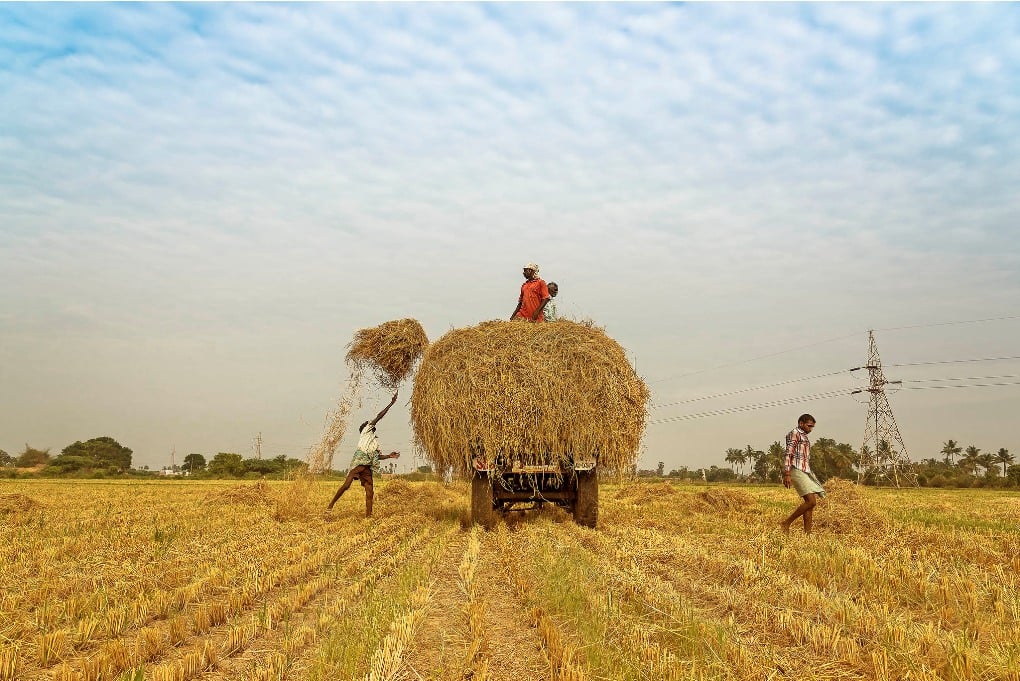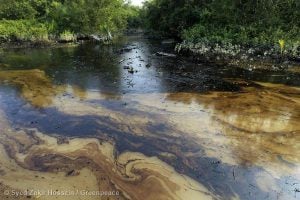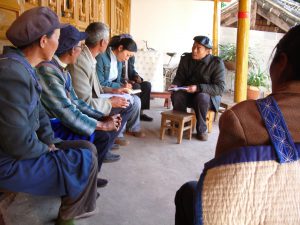“It does not rain in the monsoon, when we are ready to sow. We have to use the bore (well) to water our farms. And just when we are ready to harvest, it starts raining. Everything rots. It happened last summer. Now it has happened this winter. And this time it came with hail too. I couldn’t save anything.”
Suraj Yadav grows rice in summer and mustard in winter in his 10-acre farm near Pataudi in Haryana, just about 40 km from India’s capital. He used to make quite a bit of money, and put most of it back into his farm — buying a tractor, two Jersey cows and five buffaloes for milk. Every year he also had to deepen his well by 2-3 metres, as the water table kept going down. Now he wants to give it all up, sell his farm to a realtor and live in a flat. “The money I’ll make will be enough for my family. Why should I break my back and see my crops ruined again and again?”
Yadav’s story is repeated endlessly across Punjab, Haryana and western Uttar Pradesh — the north-western part of the Indo-Gangetic plain that is known as the bread basket of India. The whole region is in water-related distress, with groundwater overused and climate change — the threat multiplier — making rainfall more uncertain. Used to a steady monsoon pattern — rainfall from June to September and mostly dry the rest of the year — most farmers do not know what to do.
Drip irrigation, multi-cropping and organic products to the rescue
The exceptions are the few farmers who have taken three major steps. One, they have moved to drip irrigation to minimize water use. Two, they are multi-cropping, so that even if they lose one crop, they do not lose everything. Three, they have gone organic, so that the higher prices they get for their produce can make up for any shortfall.
About 70 km north of Yadav’s farm, Roop Singh grows organic vegetables and fruits in Sonepat district of Haryana. He supplies high-end shops in New Delhi. Plus, every Sunday he piles his van with his produce and drives over to an “organic farmers’ market” in Gurgaon adjacent to the capital.
“In the shops, I can charge about 30% higher than other vegetable and fruit vendors can,” Singh says. “I do not charge such a premium in the farmers’ market, I charge about 20% higher. Everything gets sold in about 90 minutes. I never have anything left over.”
Watching men and women jostle at his stall to load up their cars for the week, it is easy to believe him. But it has not always been so easy for him, Singh says. “The organic certification procedure is long. It takes 3-5 years before all the chemical fertilizers and pesticides are leached out of the soil and you can get your certificate. And the water problem keeps growing. All the farmers around me keep their irrigation pumps on all the time, and the water table keeps dropping. I’m always telling them to move to drip irrigation, but they can’t be bothered.”
Free electricity, wasted water and depleted reservoirs
“Why should we?” counters Subodh Varma, as he watches the pump flooding his five acres in Baghpat, western Uttar Pradesh. “We get electricity here only 4-5 hours a day, and nobody knows when we’ll get it. So every farmer leaves his pump switched on all the time. It doesn’t cost us anything.” In many states, electricity is provided free to farmers. Successive governments have felt it would be political suicide to end this subsidy. Nor is there a charge for groundwater use.
The result is that the Indo-Gangetic plain has the highest withdrawal of groundwater in the world. Aquifers are not only depleted, they are contaminated with fertilizers, pesticides and towards the east with arsenic that occurs naturally in underground rocks.
Surface irrigation is no panacea. So much water leaches from unlined canals that their banks are waterlogged, the soil saline, alkaline, unusable for farming. Eight months of strong sunshine means one of the highest evaporation rates in the world. And still state governments keep fighting for, and over, canals. The latest conflict is a resolution passed by the Punjab state assembly against the completion of the Sutlej-Yamuna link canal, which has been under construction for the last six decades. The resolution was passed in defiance of a Supreme Court order, with the Punjab government declaring it had no water to give to Haryana. The Haryana government, in turn, threatened to cut off Delhi’s water supply.
As World Water Day is celebrated at various conferences, one of the ironies is that right now almost all state governments in India are fighting over water, even as reservoir levels go down to the point where many hydropower stations are working at a fraction of their capacity, and even one thermal power station has had to be closed down because there is not enough water to fill the boiler.
The big reason for the very low reservoir levels is that South Asia has had two successive poor monsoons, thanks to the El Niño effect. Scientists say the current El Niño phase is ending, and just about everyone in this part of the world is looking forward to a good monsoon. That, however, is still months away. Meanwhile, authorities in the drought-hit Latur district Maharashtra have banned the assembly of four or more people near its water treatment plants to forestall violence.
Transboundary cooperation, anyone?
In this situation, any talk of cooperation over transboundary rivers draws an incredulous look from Indian policymakers. “We’re not thinking about it now,” said a senior bureaucrat in the water resources ministry. But experts point out that a shared hydrological system cannot be handled piecemeal. Overuse of groundwater in India or Pakistan affects aquifers across the border. Dams built by China on the Brahmaputra affects water flow — or at least silt flow, in the case of the run-of-river projects — to India and Bangladesh. Similar projects by India affect Bangladesh. Dams and barrages on the Ganga have affected water flow at Farakka (West Bengal) to the extent that the thermal plant had to be shut down. In that situation, it becomes difficult for Indian engineers to fulfil the terms of the India-Bangladesh treaty on the river and provide the downstream country a minimum amount of water in the leanest period of the year. Barrages in Nepal — some of them built by India — affect water flow on various rivers that join the Ganga in Uttar Pradesh and Bihar, creating an alternating cycle of droughts and floods.
World Water Day would be more meaningful if it could at least start a more integrated approach to sustainable water use in the large common ecosystem that is called South Asia.








